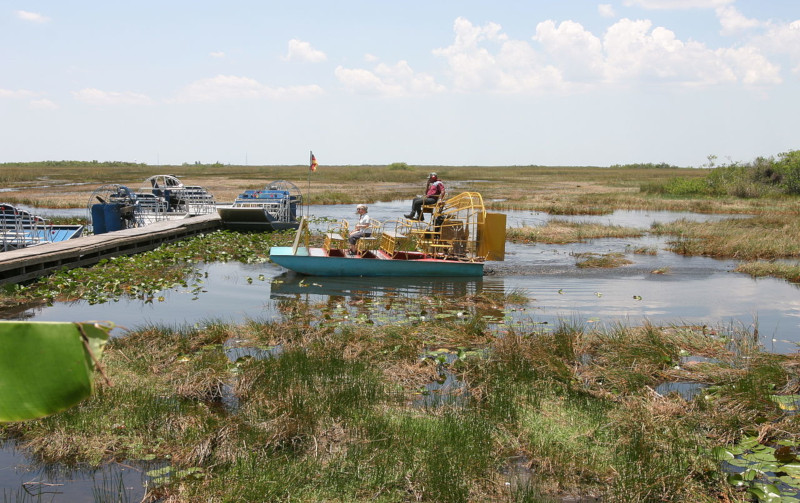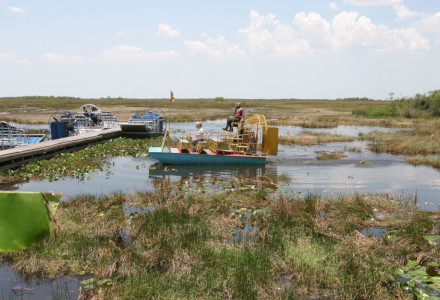
Everglades Facts
- The term of the Everglades serves as the name of an astounding natural ecosystem unlike any other currently existing on the planet. This incredible formation actually represents a unique area of naturally occurring tropical wetlands.
- The first written mention of this marvelous work of Nature occurred on the maps on early Spanish explorers. However, those who composed the maps had not actually seen the site, but relied on reports of the local indigenous populations.
- Those same Native American populations, though, had long known of its existence. In fact, evidence indicates that the region has been inhabited for more than 15,000 years. Various tribes lived there, including the Calusa and Tequesta.
- Regrettably, as modern man encroached on the region, large sections of the site were drained. Beginning in 1882, numerous projects undertook this modification in an effort to create large sections of both farmland and urban areas.
- Quite thankfully, in modern times, the remarkable Everglades now enjoys a certain amount of legal protection. Both the Ramsar Convention and UNESCO currently designate this fantastic area as a Wetland Area of Global Importance.
Related Articles
Everglades Physical Description
The precise dimensions and area of the Everglades remains, quite literally somewhat fluid. This occurs as a wholly natural result of its very nature, though. Nevertheless, the region officially considered to comprise it covers an area of roughly 1.5 million acres (607,028 ha).
It also comprises a component of a large drainage basin, which accounts for its prodigious quantities of moisture. The formation further actually represents a very slow-moving body of water, though some pockets remain stationary for extended periods of time.
Although several large ecosystems exist in the Everglades, the single greatest one remains composed of areas of sawgrass marsh. Unlike any other wetland on the planet, this region maintains itself primarily through the regular, frequently heavy, rainfall amounts.
Everglades Location, Climate, and Ecosystems
The dazzling and wholly unique marvel of Nature that man now calls the Everglades formed in a part of the world that may surprise some people. That’s due to the fact that, though it has a tropical climate itself, the surrounding area remains a temperate zone.
In point of fact, this wonder formed in a small corner of the continent of North America. That exact location often amazes those who first learn of the remarkable site. More precisely, however, it lies in the southern portion of the state of Florida, in the United States.
The state itself lies almost directly across the dividing line between tropical and subtropical zones. The Everglades lie in the southern portion of that, which provides it with its tropical type climate. The majority of its rainfall occurs in the wet season, from May to October.
Others are present, but the great majority of the Everglades is composed of three separate ecosystems. The line of demarcation, though, also remains quite blurred. Sawgrass represents the single largest of these, and remains perhaps its best known feature.
Another of these is formed by large areas of sloughs. These are large, freely flowing channels of water wending through the sawgrass. While their width understandably varies, these typically maintain a depth about 3 ft (0.9 m) greater than that of the sawgrass.
The formation known as wet prairies rounds out the three. They also tend to serve as border areas between the other two ecosystems. These have the greatest diversity of flora, and the covering layer of water only averages about 4 in (10 cm) in overall depth.
Features Sharing Its Region
Check out our other articles on 5 Marvelous Mammals of Central America, Purple Frog, Grand Canyon, Purple Passionflower, Harpy Eagle, Leona’s Little Blue, Plumed Basilisk

